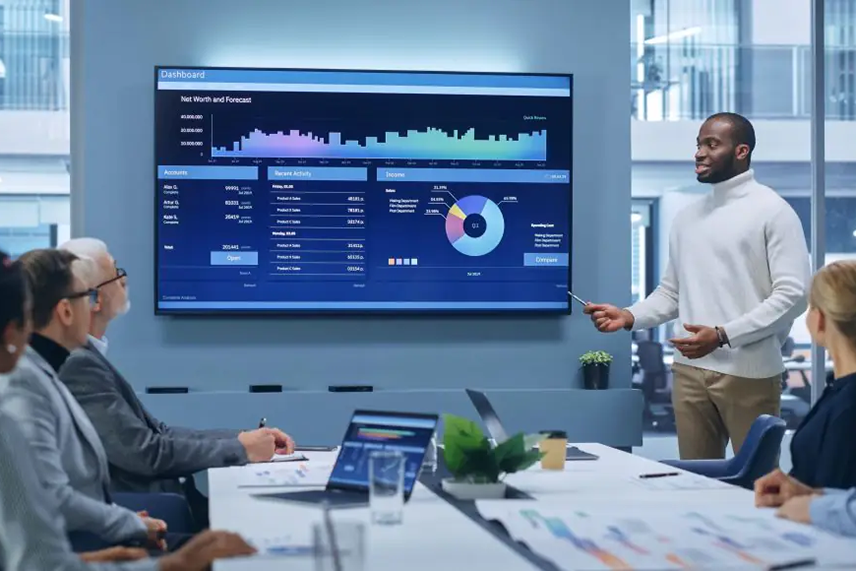
Data analytics has become a buzzword in the HR industry for a good reason. HR organizations produce a huge amount of data from internal and external operations and processes. If used efficiently, this abundance of data can be mined, cataloged, and analyzed to enable HR organizations to draw patterns and trends that can lead to better decision-making and efficient operations.
Data Analytics in HR
Just as data analytics is highly effective in business operations, it can also be used to improve decision-making in HR. In a survey conducted by Deloitte, 2021 Global Human Capital Trends, only 3% of 6300+ executive respondents said they have the information needed to make sound people decisions.
More companies have realized this information gap and are investing in data analytics. In the recently concluded SHRM 2022 Conference, data analytics and AI to improve the employee experience were some of the hot topics of discussion.
Post-COVID, there have been several changes in the way people view an occupation. This was embodied in the Great Resignation, the emergence of the gig economy, and the changed perceptions of a good employer. With a dearth of talent in the market, the importance of retaining good talent to ensure business success has never been highlighted so clearly.
In this period of uncertainty, making the right people decisions takes the utmost priority. With data analytics in HR, organizations will have the ability to collect data in real time and analyze it to make decisions that can improve employee experience, reduce attrition, increase productivity, and ultimately give the organization a competitive edge.
People-Focused Data Analytics
A basic understanding of data analytics is that it is a process of examining raw data with the goal of identifying insights, trends, and patterns to draw conclusions.
HR analytics is known by many names – people analytics, workforce analytics, talent analytics. However, its central focus is to gather, analyze, and report people data to enable HR executives, managers, and other leaders to make informed decisions about their people.
HR analytics is a data-driven approach that negates the ‘gut feeling’ often associated with HR and answers people-related questions with the backing of qualitative and statistical metrics.
HR has been collecting employee data in the past, such as attrition, performance ratings, gender ratios, employee turnover, and so on. It’s important to turn that data into information and then into insight. With automated data analytics, these threads of data can be combined, patterns can be explored, and insights can be drawn to effectively enhance people and business decisions.
With the advent of predictive HR analytics, these insights can also be future-oriented and reasonably forecast the changes in the workforce, such as predicting the risk of attrition in a department or function.

4 Applications of Data Analytics in HR
Data analytics can be applied to every stage of the employee lifecycle, from recruitment to retention and attrition. While there are several applications of data analytics in HR, here are a few use cases:
1. Using Data to Improve Recruitment
Attracting and hiring the best talent is pivotal to the success of any organization. Data analytics can play a crucial role in enabling process improvements in recruitment. Time to fill, cost per hire, conversion, feedback from candidates, and recruitment funnel are some of the metrics that can be collected and analyzed to improve the quality of recruitment in an organization.
For example, recruitment funnels can be benchmarked with competitors to evaluate whether the sourcing of candidates needs to be improved. Subsequently, feedback from candidates can be quantified and compared to conversion rates to gain insights into candidate experience and its effect on hiring.
2. Improving Talent Management Processes with People Analytics
In talent management, several data points such as employee ratings, satisfaction levels, voluntary and involuntary turnover, and compensation can be analyzed to gain insights, take measures, and predict employee behavior. The insights derived can be used to bring interventions that improve areas such as talent mobility, succession planning, and retention.
3. Prescriptive Learning for the Workforce
With the advent of eLearning, data collection has become easier and streamlined. With both eLearning and traditional methods, analytics can deduce the efficacy of training programs by using metrics such as feedback from surveys, completion rates, and comprehension rates.
Data analytics can also be used to look at skill needs at the organizational level to create personalized learning paths that can enable employees to upskill and be ready for emerging trends in the market.
4. Connecting People Metrics to Business Metrics
People processes and policies focus on ensuring employees are not only happy but are also performing to their fullest potential. Data analytics can evaluate employee productivity and how efficiently talent, money, resources, and time are being used.
Data analytics can also be used to delve deeper and connect people metrics to business metrics. For example, people metrics such as employee satisfaction and revenue can be used to draw an inference that may help in improving the employee experience and in turn the productivity of the business.

How to Start with HR Data Analytics
In today’s world, data analytics is a no-brainer. Decision-making with a sound data-driven approach has provided dividends in almost every industry, including HR. While it may be daunting to start the journey of data analytics, there are a few basic questions that one can answer to create a data analysis strategy for HR.
How are we collecting data currently?
It’s important to understand the current data collection process in HR. If multiple data gathering tools are consuming the work time, draining the efforts, or making the work of your HR workforce too taxing, consider reducing the number of such tools.
What business goals can we support through data analysis?
The data analysis strategy must cater to the priorities of the HR department and the organization.
Which tools can we implement for our data analysis strategy?
There are several tools on the market that can implement and automate data analysis – from niche tools to full-service HR platforms.
Harbinger offered data engineering expertise to a US-based talent acquisition company for improved insights in hiring. We created an automated process for efficient data transfer between HRIS apps and background screening system. Our solution enabled faster, more accurate, and precise analytics.
End Note
To be successful and competitive in today’s world, it’s imperative to attract, develop, and retain the best talent. Data analytics in HR enables companies to make this possible through data-driven decision-making. If you would like to know how we can help you with people or data analytics for HR, drop us an email at contact@harbingergroup.com.






